Produce personalized presentation boards that distill complex concepts into simple visual representations with a few helpful tools and effects.
Architecture News
How to Create Architectural Presentation Boards
Dominique Perrault Appointed Director of 2021 Seoul Biennale

Dominique Perrault was selected to direct the general curatorship of the 2021 edition of the Seoul Biennale of Architecture and Urbanism. Announced on November 8th, 2019, during the closing ceremony of the 2nd Seoul Biennale of Architecture and Urbanism, Dominique Perrault joins the team of the Seoul Biennale as its new General Director, for the 3rd edition, scheduled from September to November 2021.
Spotlight: Rem Koolhaas

With the extensive list of acclaimed alumni of his firm, OMA, it is not a stretch to call Rem Koolhaas (born 17 November 1944) the godfather of contemporary architecture. Equal parts theorist and designer, over his 40-year career Koolhaas has revolutionized the way architects look at program and interaction of space, and today continues to design buildings that push the capabilities of architecture to new places.
Stefano Boeri Architetti's New Train Station Opens in Southern Italy

On November 13th, 2019, a new train station was inaugurated in the city of Matera, Italy. The project, a new building and future park designed by Stefano Boeri Architetti, represents an important link between the city’s old town, post-war and modern districts and a key point of access to the city of Matera in the year that it’s set to become the European Capital of Culture.
City of the Future Examines the Future of Electrification

City of the Future is a bi-weekly podcast from Sidewalk Labs that explores ideas and innovations that will transform cities.
In the fourth episode from season 2, hosts Eric Jaffe and Vanessa Quirk discuss the future of electrification with Gretchen Bakke, author of The Grid: The Fraying Wires Between Americans and Our Energy Future, and Sidewalk Labs’ director of sustainability Charlotte Matthews.
Heinle, Wischer und Partner Design a New Art Museum in Krakow, Poland

Among 78 international participants, Heinle, Wischer und Partner won the first prize in the design competition for the new building of the Stanisław Wyspiański Museum in Krakow, Poland. The project will be built, in the middle of the museum district of the city and next to the historic National Museum.
AIA Announces 2019 Innovation Award Winners

The American Institute of Architects’ Technology in Architectural Practice (TAP) Knowledge Community has announced the winners of the 2019 Innovation Awards. The Innovation Awards recognize the exemplary use and implementation of innovative technologies and progressive practices among architects and designers, collaborators, and clients.
Harvard GSD's 2020 Wheelwright Prize Open for Submissions

The Harvard Graduate School of Design has initiated a call for submissions for the 2020 Wheelwright Prize, an open international competition that awards $100,000 to a “talented early-career architect to support expansive, intensive design research.” This annual prize is dedicated to advancing original architectural research that is informed by cross-cultural engagement and that shows potential to make a significant impact on architectural discourse.
SOM+ May Architecture Design Facilities for Cancer Care in Atlanta

Designed by Skidmore, Owings & Merrill LLP (SOM) with local architecture partner May Architecture, the new Winship at Midtown facility for cancer care is an addition to the Emory University Hospital Midtown (EUHM) campus and the existing Winship Cancer Institute.
“We’re Building New Ways of Working”: Morphosis Explores XR and the Future of Design Technologies

Shifts in technology reflect how designers are creating experiences of architecture and cities. New advances engender novel ways of working, and in turn, shape our design process. As a practice defined by pushing boundaries, experimenting with workflows, and embracing new design technologies, Morphosis has a forty-year history of enthusiastically wondering at the future.
House Lessans by McGonigle McGrath Wins RIBA House of the Year 2019

Designed by Kieran McGonigle and Aidan McGrath, House Lessans, has been named RIBA House of the Year 2019. The most prestigious prize given to the UK’s best new architect-designed house has been awarded this year to a simple home located in County Down, built on the site of a former farmstead.
AS+GG Releases Design for New Financial District in China
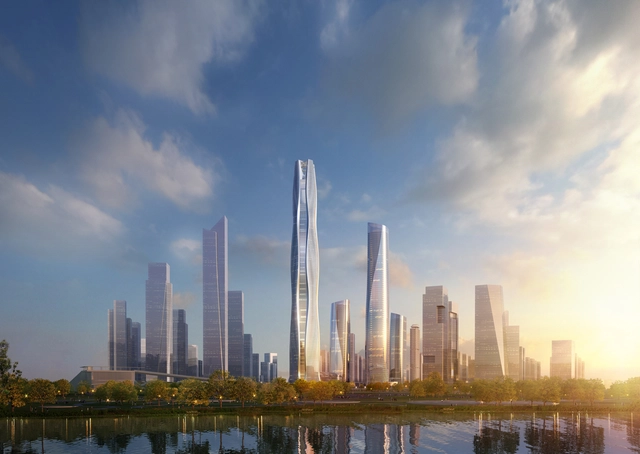
Adrian Smith + Gordon Gill Architecture has unveiled new images for the competition of the South HeXi Yuzui Financial District, the foundation for a new world-class, waterfront business district. The 500-meter-tall tower, part of the development will become the new focal point for the district, attracting businesses and tourism from China and the international market.
RIBA Royal Gold Medalist Ted Cullinan Passes Away at 88

Architect Edward Cullinan, founder of Cullinan Studio, has passed away aged 88. The studio announced the death its founder, saying that Cullinan died in his sleep on Monday. Known as Ted, he was awarded the 2008 RIBA Royal Gold Medal for Architecture in recognition of his inspirational practice and teaching.
Glenn Murcutt's MPavilion Unveiled in Australia

Glenn Murcutt has unveiled the design of the 2019 MPavilion as part of Queen Victoria Gardens in Melbourne, Australia. Known for environmentally responsible designs grounded in an Australian background, Murcutt's new project is his first civic city design. MPavilion 2019 is the sixth in an ongoing series of annual architect-designed summer pavilions for Melbourne.
BOGL Wins Urban Development Competition in a Norwegian Harbor City

BOGL, a Danish landscape architecture studio, won the open planning and design competition for an urban development project in Norway. Located in the harbor city Tananger, a growing area, the proposal highlights the possible evolution of the space into an attractive place to live, work and visit.
X-Space, a Greenway Project in Dubai Wins the Grand WAFX 2019 Prize

Presented to projects that anticipate and address future challenges, the WAFX Award celebrates the “most forward-looking architectural concepts”. X-Space, an urban fabric regeneration project in Dubai, winner of the Smart Cities Category was selected to take on the overall WAFX 2019 prize.
SPACE10 Opens New Research and Design Lab in India

SPACE10 has opened a new research and design lab in Delhi, India. The opening aims to create a collaborative platform where experts, creatives and specialists in multiple fields can meet, experiment, and prototype solutions for everyday life. The new lab opens inside Chhatarpur's Dhan Mill Compound in South Delhi.
Belgian Architect Juliaan Lampens Passes Away at 93
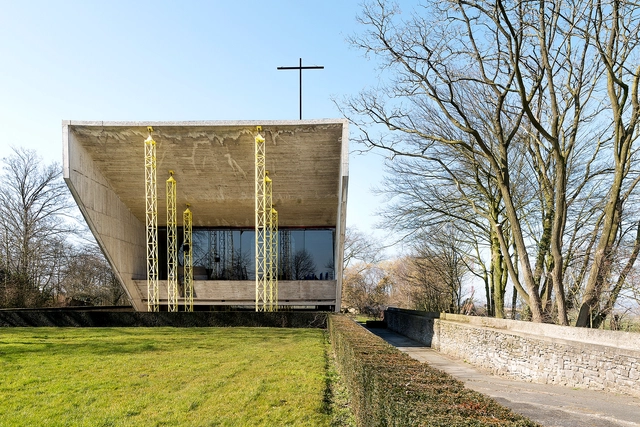
Belgian architect Juliaan Lampens has passed away at the age of 93, in Ghent, Belgium. Known for his brutalist houses and his skillful use of concrete, wood and glass structures, the architect has created some of the most famous works from the last decade, including House Juliaan Lampens – Van Hove, House Vandenhaute – Kiebooms, and Kerselare Chapel.
FAAB Reimagines Warsaw's Piłsudski Square in Poland

FAAB Architektura has unveiled their design that reimagines Warsaw's Piłsudski Square in Poland. Made to bring together the humanities, arts and sciences with nature, the proposal aims to inspire interactions between disciplines. As the team state, the proposal was formed as an intermingling of history and art, literature and music, film and design, science and innovation. The project is made to promote the creation of urban ecosystems.
Snøhetta & Clark Nexsen Reveal Images for Library in North Carolina
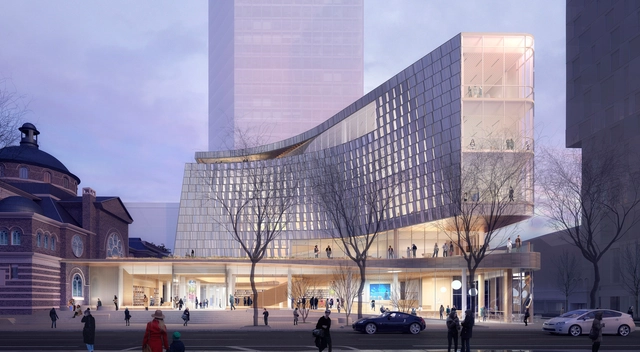
Designed by Snøhetta in collaboration with Clark Nexsen, the new Main Library of Charlotte Mecklenburg Library reinterprets the space through a technologically-advanced approach and highlights the importance of this function in the community's daily life.
ZHA & Esplan Win Competition to Design the New Terminal for Rail Baltica
.jpg?1573206551&format=webp&width=640&height=580)
Zaha Hadid Architects were selected along with Esplan from Estonia to design the new terminal of the Rail Baltic railway at Ülemiste, Tallinn. Their proposal for the starting point of the Rail Baltic line connecting Tallinn, Riga and Vilnius with the European high-speed rail network, has been awarded the first place in the design competition.
Mecanoo Reveals Konka Mixed-Use Inspired by Historic Chinese Towns
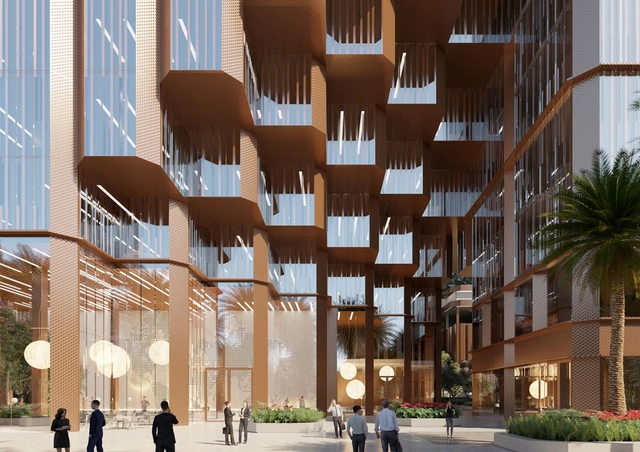
Dutch design practice Mecanoo has revealed their design for the Konka mixed-use project in Shenzhen, China. As the team states, Shenzhen is searching for new models for urban and architectural innovation to replace the traditional model of large-scale indoor shopping malls and focus on flexible development. The new Kang Qiao Jia Cheng development was made to provide an urban regeneration paradigm and a new icon for the Shenzhen skyline.
Sordo Madaleno Architects Designs New Hotel for Mexico's Sea of Cortez
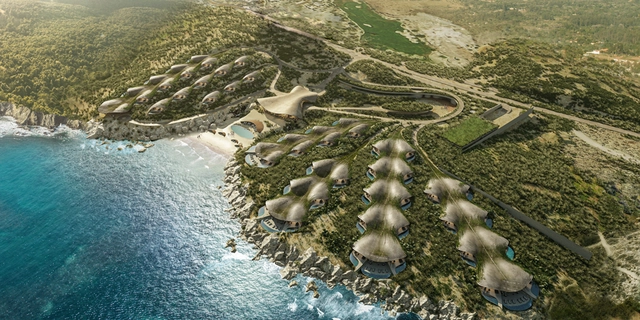
The large biological reserves located in La Paz, Baja California Sur in northern Mexico have made this destination one of the most significant for ecotourism and its proximity to the United States has accelerated its development in recent years.
2020 Times Square Valentine Heart Announced

The Times Square Alliance has announced that Heart Squared by MODU and Eric Forman Studio is the winner of the 2020 Times Square Valentine Heart Competition. Curated by Cooper Hewitt, Smithsonian Design Museum, the competition celebrates its 12th anniversary creating proposals for a public art installation celebrating “Love in Times Square” during the month of February.















































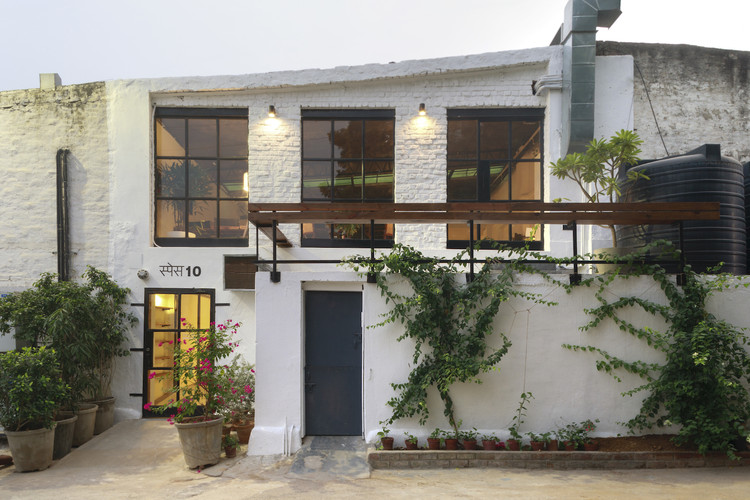










.jpg?1573206665)


.jpg?1573207055)
.jpg?1573206551)









